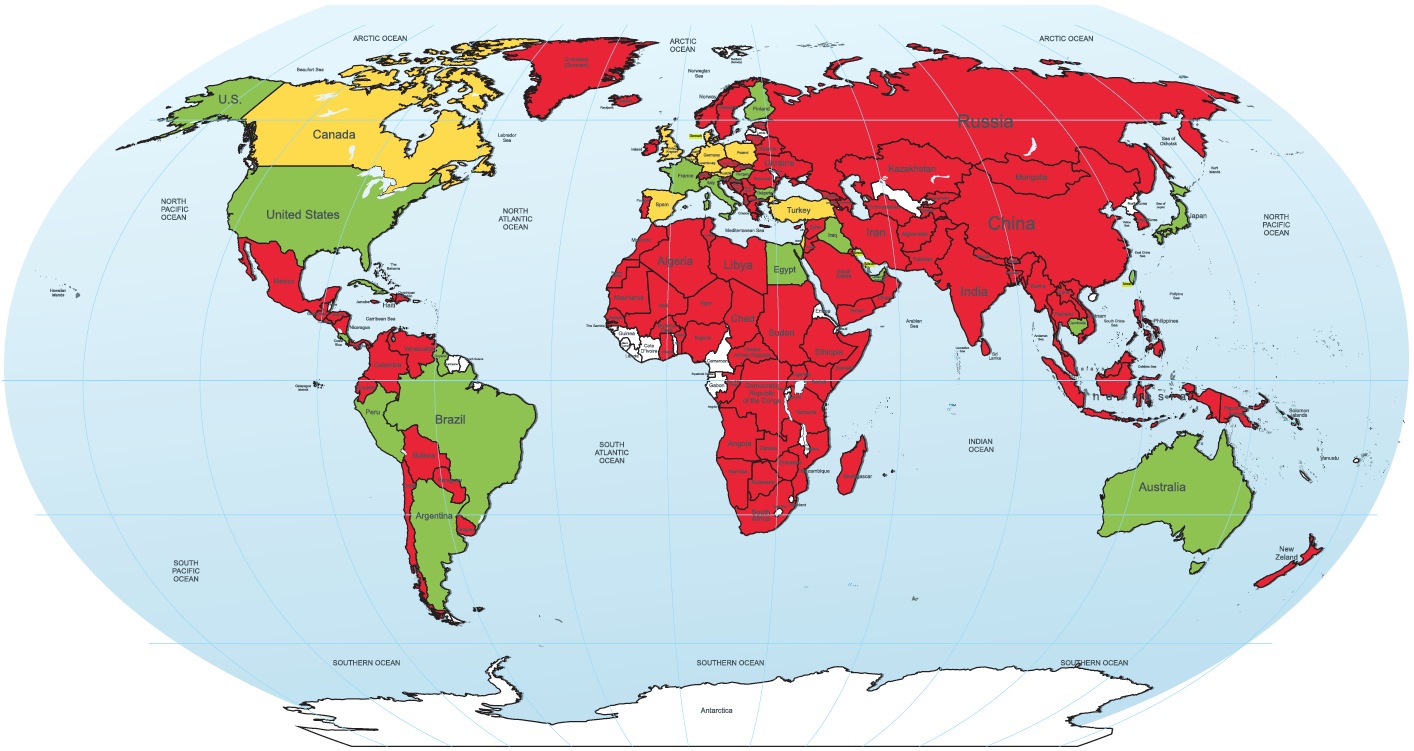April 9th, 2013
Quinidine Unavailable in Most of the World
Larry Husten, PHD
Quinidine — the only drug known to be effective in preventing lethal ventricular arrhythmias in people with several rare conditions, including Brugada syndrome, idiopathic ventricular fibrillation (VF), and early repolarization syndrome — is no longer available in much of the world.
In a study published online in the Journal of the American College of Cardiology, Sami Viskin and colleagues surveyed physicians around the world about the availability of quinidine in their country and received responses from 273 physicians in 131 countries. In 76% of the countries quinidine was not available at all. In another 10% quinidine was available only through a regulatory process that can take several days to several months to obtain the drug. Quinidine was easily obtained in only 14% of countries.
The researchers also obtained information about 22 patients with serious arrhythmias that were probably or possibly related to the unavailability of quinidine.
In most other cases of drug shortages, the authors note, the unavailability of life-saving drugs is usually related to the high cost of the drugs. In this case, however, the lack of availability is due to the “low price and restricted indication for a low prevalence disease, rendering unfavorable pharmaceutical market forces from the perspective of industry.”
Quinidine was once a frequently used antiarrhythmic agent, but its use declined sharply with the advent of newer agents and evidence showing an association with harm in clinical settings. However, the authors write, the disappearance of quinidine from the market in 2006 “was clearly problematic from the ethical point of view since the unique effectiveness of quinidine for VF prevention and for controlling arrhythmic storms in patients with idiopathic VF had been known for more than two decades at that time. Moreover, the laboratory and clinical evidence establishing the high efficacy of quinidine in the management of the Brugada syndrome, particularly for arrhythmic storms, were well known at the time quinidine production was discontinued.”
The authors write that “the lack of quinidine accessibility is a serious medical hazard at the global level.” They recommend that professional medical organizations coordinate with national healthcare authorities to ensure quick and inexpensive access to quinidine in all countries. Until then, referral hospitals “should ensure an adequate supply of quinidine for immediate access in medical emergencies.”

World map of quinidine availability.
Color code: green = quinidine is readily available; red = quinidine is not available;
yellow = available with restrictions; white = no data
(Reproduced with permission from the Journal of the American College of Cardiology)

It’s also available just the last year or so in conjunction with dextromethorphan as Nuedexta to treat PBA. The CYP2D6 enzyme inhibition potentiates DM’s effect on the CNS in these people–mostly MS and ALS pts.–The quinidine dose is low, only 10mg.q 12 hrs.